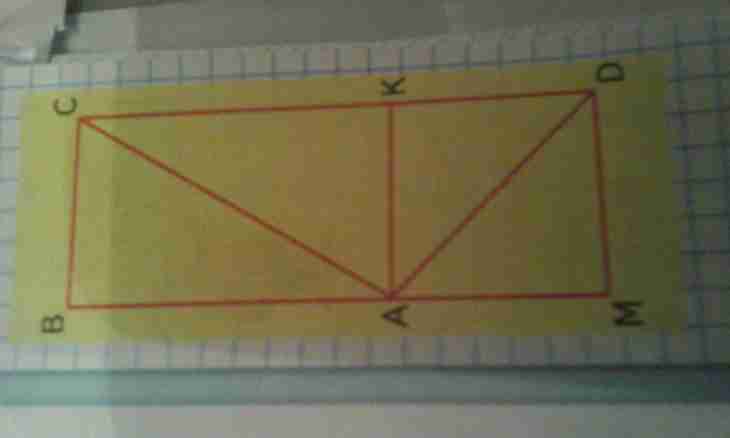Triangle perimeter, as well as any other flat geometrical figure, the sum of lengths of the pieces limiting it is. Therefore to calculate perimeter length, it is necessary to know lengths of its parties. But that lengths of the parties in geometrical figures are connected by certain ratios with sizes of corners there can be sufficient knowledge of only one or two parties and it or two corners.
Instruction
1. Put all lengths of the parties of a triangle (A, B, C) if they are known - it is the simplest of possible ways of finding of length of perimeter (P): P=A+B+C.
2. If sizes of two corners of a triangle are known (β and γ) and length of the party between them (A), then, proceeding from the theorem of sine, it is possible to learn lengths of two other parties. Each of them will be equal private from division operation where the work of length of the known party on a sine of the angle between the known and required parties, and a divider - a sine of the angle, equal to a difference between 180 ° and the sum of two known corners will be a dividend. That is, the unknown party of B will be calculated on a formula B=A∗sin(β)/sin (180 °-α-β), and the unknown party of C - on a formula C=A∗sin(γ)/sin (180 °-α-β). Then length of perimeter (P) can be determined, having put these two expressions with length of the known party of A: P = A + A∗sin(β)/sin (180 °-α-β) + A∗sin(γ)/sin (180 °-α-β) = A ∗ (1 + sin(β)/sin (180 °-α-β) + sin(γ)/sin (180 °-α-β)).
3. If triangle - rectangular, then its perimeter (P) it is possible to calculate, knowing lengths of only two parties. If lengths of both legs are known (A and B), hypotenuse length, according to Pythagorean theorem, will be equal to a square root from the sum of squares of lengths of the known parties. If to this size to add the sum of the known parties, then also perimeter length will become known: P=A+B+ √ (A²+B²).
4. If in a rectangular triangle lengths of a hypotenuse (C) and one of legs (A), then of the same Pythagorean theorem length of a missing leg are known it is possible to define how a square root from a difference of squares of lengths of a hypotenuse and the known leg. It will be necessary to add length of the known parties to this size to calculate triangle perimeter: P=A+C+ √ (C²-A²).
5. If length of one of legs of the rectangular triangle (A) and corner size (α) lying opposite to it is known, then it is enough to calculate the missing parties and length of perimeter (P): P=A ∗ (1/tg(α) +1/sin(α) +1).
6. If except length of one of legs of a rectangular triangle (A) the size of an acute angle, adjacent to it, is known (β), then and it will be enough for calculation of perimeter (P): P=A ∗ (1/сtg(β) +1/cos(β) +1).
7. If the size of one of acute angles of a rectangular triangle is known (α) and length of its hypotenuse (C), then perimeter (P) it is possible to calculate on a formula: P=C ∗ (1+sin(α) +cos(α)).

